The Little Valley Fire
Between Oct. 4 and Oct. 13, 2016, the Nevada Division of Forestry conducted the Little Valley Prescribed Burn and “mop-up” operation where personnel patrolled and extinguished any residual fire within an established containment area. The Little Valley Prescribed Burn took place in Whittell Forest & Wildlife Area, owned by the University of Nevada, Reno, and located near the West Washoe Valley community. On Oct. 14, 2016, burning embers originating from the Little Valley Prescribed Burn escaped and ignited the Little Valley Fire. Driven by high winds and low relative humidity, the Little Valley Fire burned 2,291 acres over five days and tragically destroyed 23 homes and 17 outbuildings.
After the Fire
The University of Nevada, Reno, U.S. Forest Service, Humboldt-Toiyabe National Forest and the Nevada Division of Forestry have worked together to rehabilitate the landscape after the Little Valley Fire.
What have they accomplished?
University of Nevada, Reno
University of Nevada, Reno has worked on both Whittell property and private property to plant seedlings, remove dead trees and clear woody debris from several creeks.
- 2,100 seedlings planted on 25 acres of private land, on 4 parcels
- 1,600 seedlings planted in the Whittell Forest & Wildlife Area
- Removed dead trees on 7 parcels
- Cleared woody debris in creeks on 3 parcels
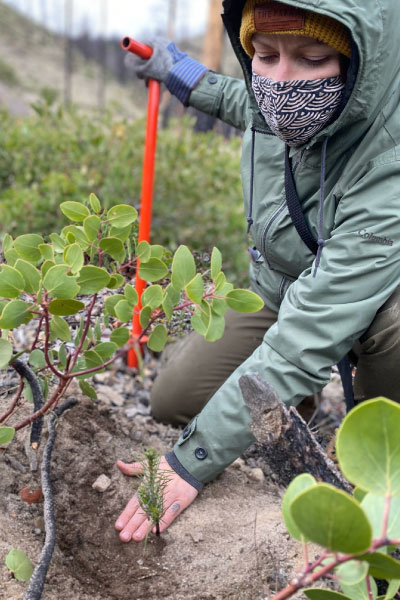
A university student plants a tree seedling. Photo courtesy of Hunter Noble.
U. S. Forest Service, Humboldt-Toiyabe National Forest
U. S. Forest Service, Humboldt-Toiyabe National Forest has removed dead trees and planted tree seedlings on Forest Service land.
- 8 acres salvaged
- Removed dead trees on 26 acres
- 5,000 tree seedlings planted on Forest Service land
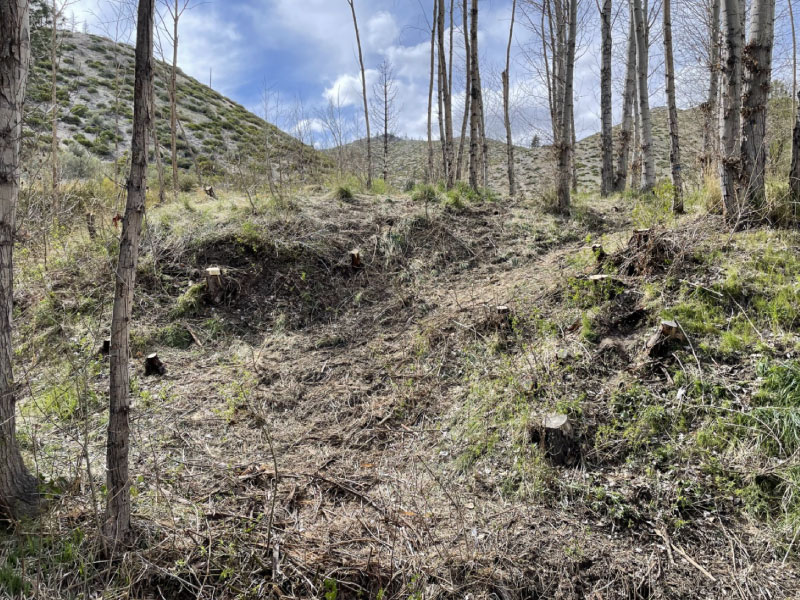
Dead trees have been removed from this area in the burn scar. Photo courtesy of Hunter Noble.
Nevada Division of Forestry
Nevada Division of Forestry has worked extensively on public and private land, rehabilitating the burned area through tree removal, reseeding, tree planting and erosion control.
Tree Removal
- Hazardous tree removal on 52 parcels
- 125 acres of salvage logging on 25 parcels
Planting and Reseeding
- 7,000 trees planted
- 1,250 shrubs planted
- 50 wildflowers planted
- 190 acres seeded
Species Planted: Jeffrey pine, ponderosa pine, sugar pine, black cottonwood, Fremont cottonwood, aspen, choke cherry, bitter cherry, willow, mountain mahogany, bitterbrush, sagebrush, penstemon, yarrow, blanket flower.
Species in Seed Mix: Intermediate wheatgrass, thickspike wheatgrass, sainfoin, squirrel tail bottlebrush, arrowleaf balsalmroot, blue flax, sulfur buckwheat, Sandberg bluegrass, needle & thread grass, western yarrow.
Erosion Control
- 13,325 feet of straw waddles
- Over 200 log erosion barriers
- 5 properties with silt fencing
- 9 check dams
- Thousands of sandbags utilized
- 37 culverts cleared
- Repaired Franktown Ditch
- Sediment removal in stream/pond
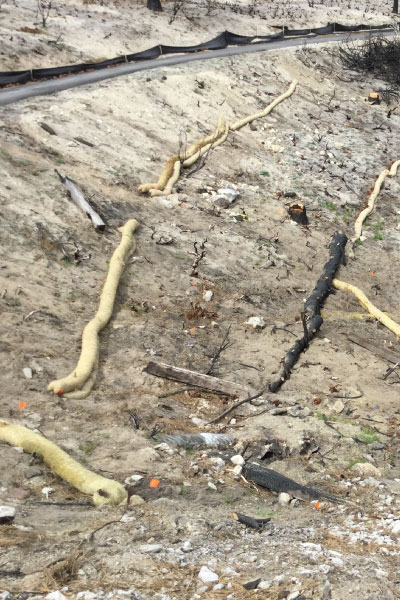
Straw waddles and log erosion barriers counteract soil erosion by trapping sediment from water runoff.
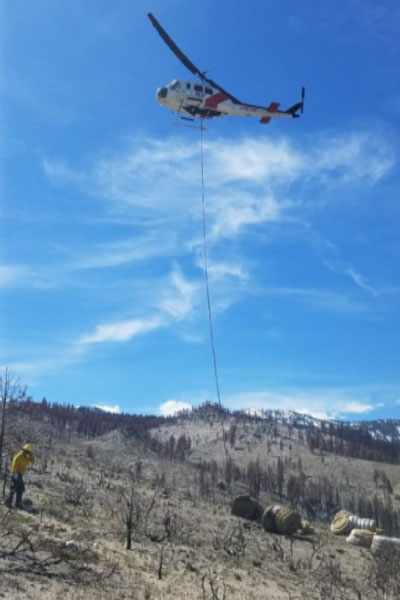
A helicopter delivers straw waddles.
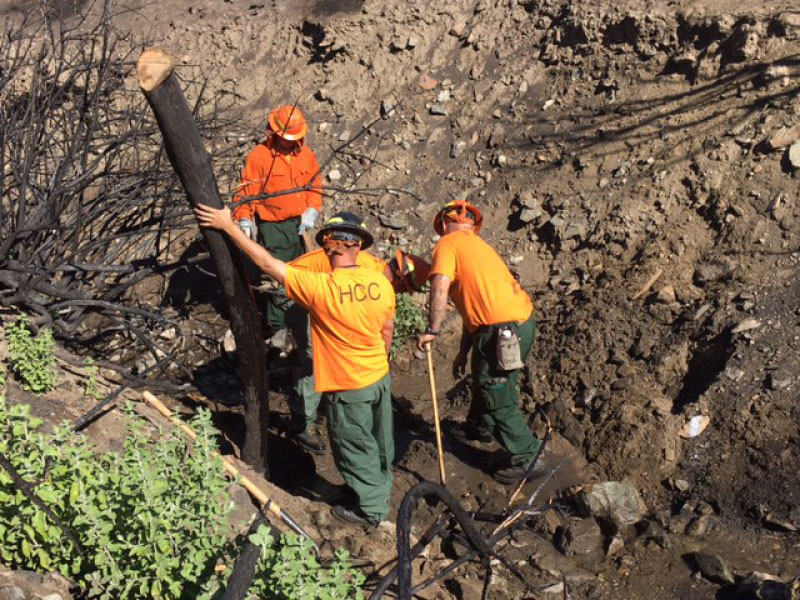 <
<
A crew works on a check dam. These small and sometimes temporary dams are built across drainages to reduce the speed of water runoff and resist soil erosion.
Acknowledgments
This fact sheet was prepared by Living With Fire at University of Nevada, Reno Extension, a program committed to helping Nevadans living more safely with wildfire. The program is funded collaboratively by University of Nevada, Reno Extension; Nevada Division of Forestry; Bureau of Land Management; and the United States Forest Service. The University of Nevada, Reno is an EEO/AA institution.
Kay, M., Restaino, C.
2021,
2021 Little Vally Fire Restoration Update,
Extension | University of Nevada, Reno, FS-21-113


